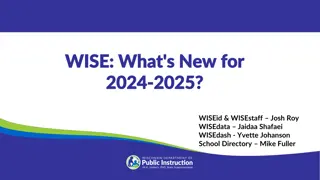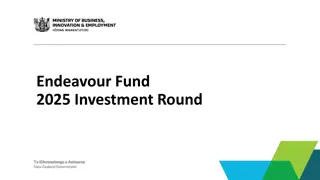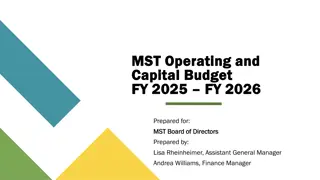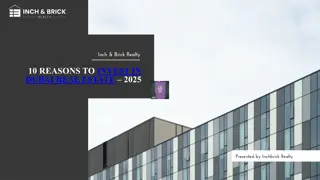
Learn Past Continuous Tense in English
Explore the structure and usage of past continuous tense in English grammar through examples of affirmative, negative, and question sentences. Gain insights into important rules and tips for correctly using "was" and "were" with singular and plural subjects, and forming verbs in the "-ing" form.
Download Presentation

Please find below an Image/Link to download the presentation.
The content on the website is provided AS IS for your information and personal use only. It may not be sold, licensed, or shared on other websites without obtaining consent from the author. If you encounter any issues during the download, it is possible that the publisher has removed the file from their server.
You are allowed to download the files provided on this website for personal or commercial use, subject to the condition that they are used lawfully. All files are the property of their respective owners.
The content on the website is provided AS IS for your information and personal use only. It may not be sold, licensed, or shared on other websites without obtaining consent from the author.
E N D
Presentation Transcript
Medical physics Department Medical physics Department Subject: English Language Subject: English Language Class: Third Class: Third Lecturer: MSC. Lecturer: MSC. Sakina Sakina Hussain Hussain Alsuwaydi Alsuwaydi Lecture Lecture: : ( (5 5) ) Past Past continuous continuous Study Year: 2024-2025
Introduction to Past Continuous The past continuous tense is used to describe actions that were happening at a specific moment in the past. Example: I was watching TV at 9 PM.
Structure of the Past Continuous Tense Affirmative Sentences Structure: Subject + was/were + verb Subject + was/were + verb- -ing ing (Was) is used with he/she/it (singular subjects) and were is used with I/you/we/they (plural subjects). Example: She was reading a book. They were playing football in the park.
Negative Sentences Structure: Subject + was/were + not + verb Subject + was/were + not + verb- -ing ing In negative sentences, we use was not (wasn t) or were not (weren t). Example: I wasn t sleeping when you called. We weren t listening to music at that time.
Questions Structure: Was/Were + subject + verb Was/Were + subject + verb- -ing ing? ? In questions, was or were comes first, followed by the subject, then the verb in the ing-form. Example: Was she reading a book? Were they watching a movie last night?
Important Rules and Tips 1. Use Was and Were Correctly: Was is used for singular subjects (I, he, she, it) in the past continuous. Example: He was studying late last night. Were is used for plural subjects (you, we, they) and also with you in the singular. Example: We were playing soccer when it started raining.
2. The Verb in the -ing Form: In the past continuous, the main verb always ends in -ing. This shows that the action was ongoing. Example: She was walking to school. -For regular verbs, just add -ing (play playing, walk walking). -For irregular verbs, follow the usual rules: -If a verb ends in -e, drop the -e and add -ing (make making). -Double the final consonant if the verb is short and ends with a vowel + consonant (run running).
Interrupted Actions: The past continuous is often used for actions that were interrupted by a short, completed action in the past (usually in the past simple tense). Example: I was studying when the power went out. In this case, was studying is the ongoing action, and went is the action that interrupts it.
Time Expressions Commonly Used with Past Continuous: - -At + specific time (e.g., At 8 PM, At midnight, At that moment) At + specific time (e.g., At 8 PM, At midnight, At that moment) Example: At 7 PM, I was cooking dinner. - -While + past continuous (used for two actions happening at the same time) While + past continuous (used for two actions happening at the same time) Example: While I was watching TV, my brother was playing video games. - -When + past simple (used to show an interruption) When + past simple (used to show an interruption) Example: I was reading when she called. - -For/During/All day (used to show the duration of the action) For/During/All day (used to show the duration of the action) Example: He was sleeping all day yesterday.
- -When + past simple (used to show an interruption) When + past simple (used to show an interruption) Example: I was reading when she called.
Examples of All Forms: 1. Affirmative: They were talking during the meeting. I was studying all night. 2. Negative: She wasn t paying attention in class. We weren t waiting for anyone. 3. Question: Was she listening to music when you arrived? Were they playing football yesterday?
Tips for Using the Past Continuous: 1. Context matters: The past continuous is useful when describing what was happening at a specific time, especially if it was happening in the background or in progress. Example: I was watching TV when she arrived. 2. Don t confuse with past simple: Use the past simple for actions that are finished or completed in the past. The past continuous focuses on actions in progress. Example: I ate dinner (completed action) vs. I was eating dinner when she called (action in progress).
Conclusion: The past continuous tense is essential for describing actions that were happening over time in the past. It s used for ongoing actions, parallel actions, and interruptions. By following the structure and rules above, you can accurately describe various actions in the past!
















